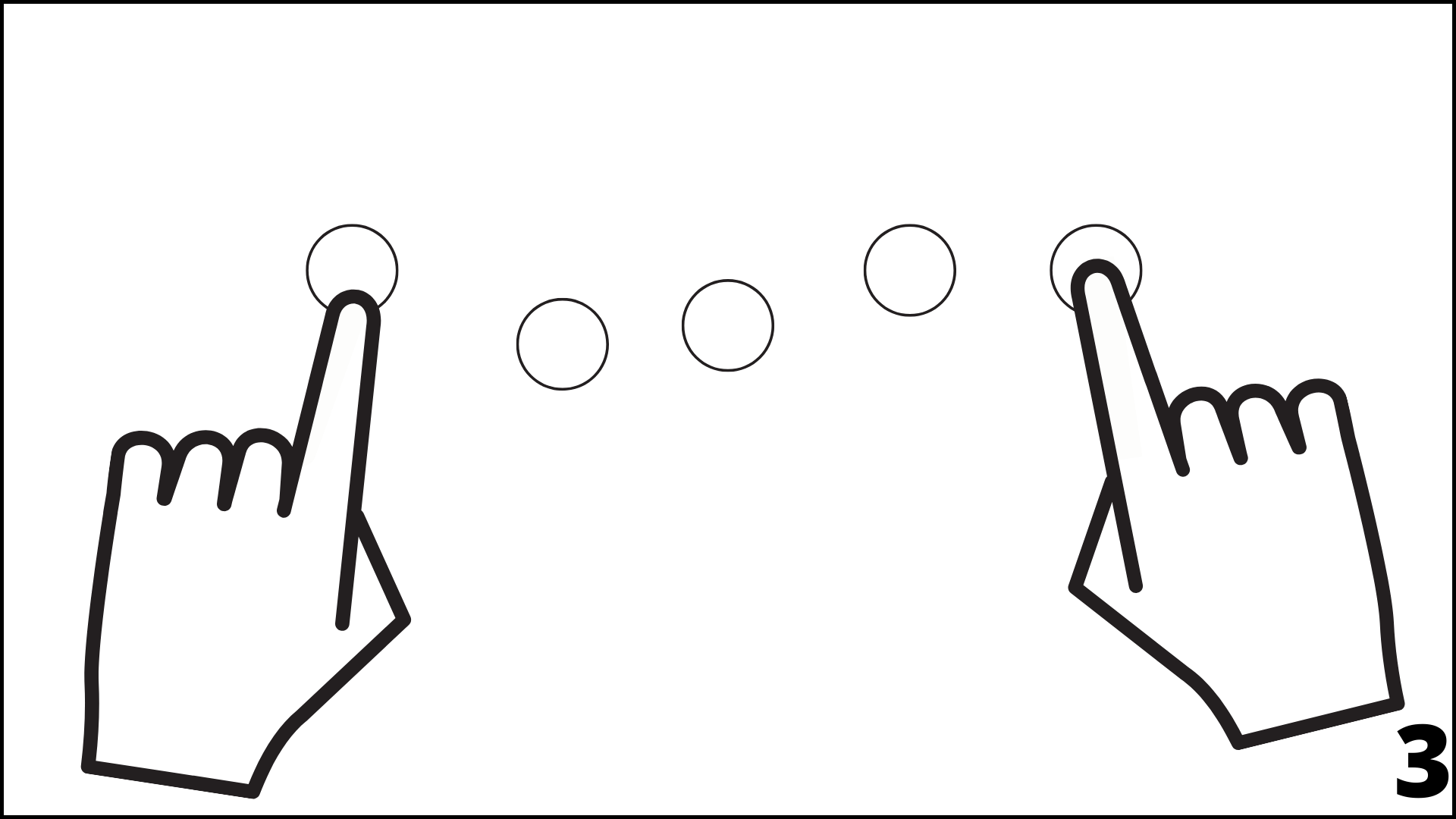Sheep & Thieves: Magic Coin Trick Tutorial
Learn an easy coin trick. From the desk of David Britland

This is an excellent trick to know. It’s an asymmetric transposition of coins from one hand to another performed at the table as you tell an entertaining story about two thieves trying to steal sheep.
You can perform it totally impromptu with any small objects you have to hand, coins, counters, matchsticks, paper balls, and even almonds. It’s especially useful when people ask you to teach them some magic. You can teach them the trick and yet still baffle them. And then, if you wish, baffle them again.
The trick goes under many names, but the first I can find is The Five Robbers, described in the 1801 French book of magic and recreations called Trois Heures d'Amusement, ou le nouveau Comus, which roughly translates to Three Hours of Fun, the new Comus.
Lewis Carroll made a brief mention of what might be the same trick in an 1878 letter where he referred to ‘two thieves and five apples,’ and by 1884, we find it published in Harper’s Young People magazine as The Sheep and the Robbers.
The identity of the thieves and the stolen items has varied over time. Dai Vernon told a story about Tramps and Chickens when he taught it on the US TV series You Asked for It in 1957, while Arthur de Mello had a story about G-Men and Magicians when he published his version in the 1937 Summer Extra issue of the Jinx. No matter how you decide to craft your story, you need seven objects for the trick. Get yourself seven small coins, and we’ll begin.
Method
There are three phases in this routine, each building on the one before. The first, the one you can teach the spectators, is a complete swindle. There’s no sleight of hand. You misrepresent what you are doing, and the deception flies by as you tell the story. This is the 1801 version.
The second phase, the one that will fool spectators even after you have explained the first phase, uses a simple sleight, the pretend transfer of a coin from one hand to another. You don’t have to be an expert at this because you do it on the offbeat.
The third phase requires you to lap a coin. Again, you do the move on the offbeat. The moves are simple and well-covered. Telling a good story sells the trick.
Phase One
Sitting at a table, take out the seven coins as you ask the spectators to use their imagination for a moment. Lay out five of the coins in a line across the table.
‘These are five sheep.’ Lay the other two coins below them, closer to you, ‘And these are two thieves.’ (1).

Pick up the two Thief coins, one in each hand. Close your hands into fists, saying, ‘The thieves hid in two barns at the end of the farmer’s field.’
‘They had a simple plan. Wait until the farmer is away and then dash out and steal all the sheep.’
As you say this, you gather up the Sheep coins with both hands. The left-hand picks up the coin at the left of the row, between thumb and fingers, and into the fist. The right-hand takes the coin at the right of the row. Left-hand picks up the next coin on the left. Right picks up the coin on the right. And, finally, the left-hand picks up the remaining coin.
Do this quickly and without hesitation, until all the coins are in your closed hands, the two hands picking up coins alternately one after the other.
The result is you now have 4 coins in the left hand and 3 coins in the right.
‘But then they saw the farmer. Walking in their direction. So, they quickly put the sheep back.’
You now return the Sheep to the table. But you do it in the following manner. The right-hand puts one of its coins on the table. Then the left. Then right. Then left again. And finally, the right puts down the last of the Sheep. Five coins are back on the table as before.
However, there are now 2 coins in the left hand. And none in the right.
‘The farmer checks the sheep. Everything is fine. And he ambles away. That’s when the thieves go into action. They take all the sheep and hide them in the barns.’
You gather up the coins again, exactly as you did before, starting with the left hand. In the end, you will have 5 coins in the left hand but only 2 in the right.
‘The thieves are so busy that they do not notice the farmer has returned. He sees the field empty. The sheep have gone. He can also see the barns. He goes to the first one and knocks on the door.’
You tap your left fist on the table twice.
‘The door opened. And inside are... the sheep.’
Open your left hand, palm up, and then let the 5 coins slide onto the table.
Open your right hand and reveal that it contains just 2 coins. Let them slide onto the table but a little nearer to you than the Sheep coins.
‘The thieves had escaped.’
That’s phase one. It’s a cute trick, self-working, and ideal for showing to anyone who wants you to teach them a trick they can do.
You can now move to phase two.
Phase Two
The coins are on the table. The two Thief coins on the right are nearer to you than the Sheep coins (2).

With the right hand, pick up one of the Thief coins and make a pretend transfer of the coin to the left hand which immediately closes into a fist. A simple pass that retains the coin in the right fingerpalm is all you need. Then pick up the remaining Thief coin with the right hand and close the fist around it. Don’t let the two coins clink together. Hold your closed fists up as you say, ‘The thieves had escaped. But so had the sheep.’
Turn the hands down, extend the forefingers, and use them to arrange the Sheep coins in a line across the table (3).

You’re about to do what seems to be a repeat of the trick, but you are already well ahead of the spectators.
‘The thieves try again, taking the sheep and hiding them in the barns.’
Gather up the coins as before, but this time begin and finish with the right hand, not the left. This will end with 5 coins in the right hand, and 2 in the left.
‘Again, the farmer showed up. The sheep have gone. But he wasn’t stupid. This time, he went to the other barn. And knocked on the door.’
Tap your right fist against the table.
‘When the door opened, out came the sheep.’
Open your right hand and let the 5 coins slide onto the table.
‘The thieves had escaped again.’
Open your left hand and let 2 coins slide onto the table.
Simple though it is, this sequence is a fooler, and you can finish here. But, if you want to go on, there is a third phase.
Phase Three
You are going to lap a coin in this phase, so need to make sure that any coin that drops on your lap doesn’t fall to the floor. If you can, it’s a good idea to put a napkin on your lap. If you can’t, make sure your legs are together.
Put a hand on each of the two Thief coins and slide them towards you, off the table edge, and pick them up. The left hand genuinely picks up its coin and closes into a fist. However, the right-hand lets its coin drop onto your lap before closing into a fist. Try to make the action consistent with the previous handling. The right hand is empty. The left hand contains a coin. Extend your forefingers and push the Sheep coins into a line across the table to start the trick again (3).
‘One week later the thieves returned and, once again, tried to steal the sheep.’
Gather up the coins, this time beginning with the left hand and finishing with the left hand. This gives you 4 coins in the left hand, 2 in the right, and there is 1 on your lap.
‘But the farmer had built a wall right across the field. Imagine this table is the wall. Not easy, but we’re pretending the coins are sheep so let’s run with it.’
Put your right hand above the centre of the table. Move your left hand under the centre of the table, picking up the lapped coin as you go. Tap your fists on either side of the table.
‘The wall separated the barns. There was no way the thieves could escape. He knocked on the door of the first barn.’
Knock your right hand against the centre of the table and then open the hand to reveal 2 coins.
‘There were the thieves. Looking sheepish. But no sheep.’
Bring your left hand back over the table and open it to show the 5 coins. ‘And the Farmer never saw the sheep again.’
Notes
If you’re a bit of a comedian, you might utter a Baaa! sound each time you open your hand to reveal the 5 Sheep coins. It’s not something I can imagine Dai Vernon doing, but hey it might work for someone.
Another idea is to use a Moo Box. You’ve probably seen these vintage toys. It’s a small canister. You turn it upside down, and it emits a loud mooing sound. It’s not electronic, it works with a small mechanical bellows. You can get versions that make other animal sounds, like that of a duck or a sheep, all of which can be the subject of this trick. These noisemakers are available at Amazon and other online stores. A search for Moo Boxes will find them.
Have the Moo Box hidden on your lap. At the end of the routine, invert the box under the table. The animal sound will surprise the spectators. Then bring up the left hand to reveal the 5 coins. Finish by saying, ‘Don't worry. That wasn't a real sheep,’ and then put the Moo Box on the table. It’s a funny bit, and everyone will want to try the Moo Box for themselves.
Kudos to anyone who brings the left hand from under the table and produces five lamb chops.
